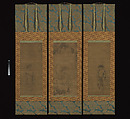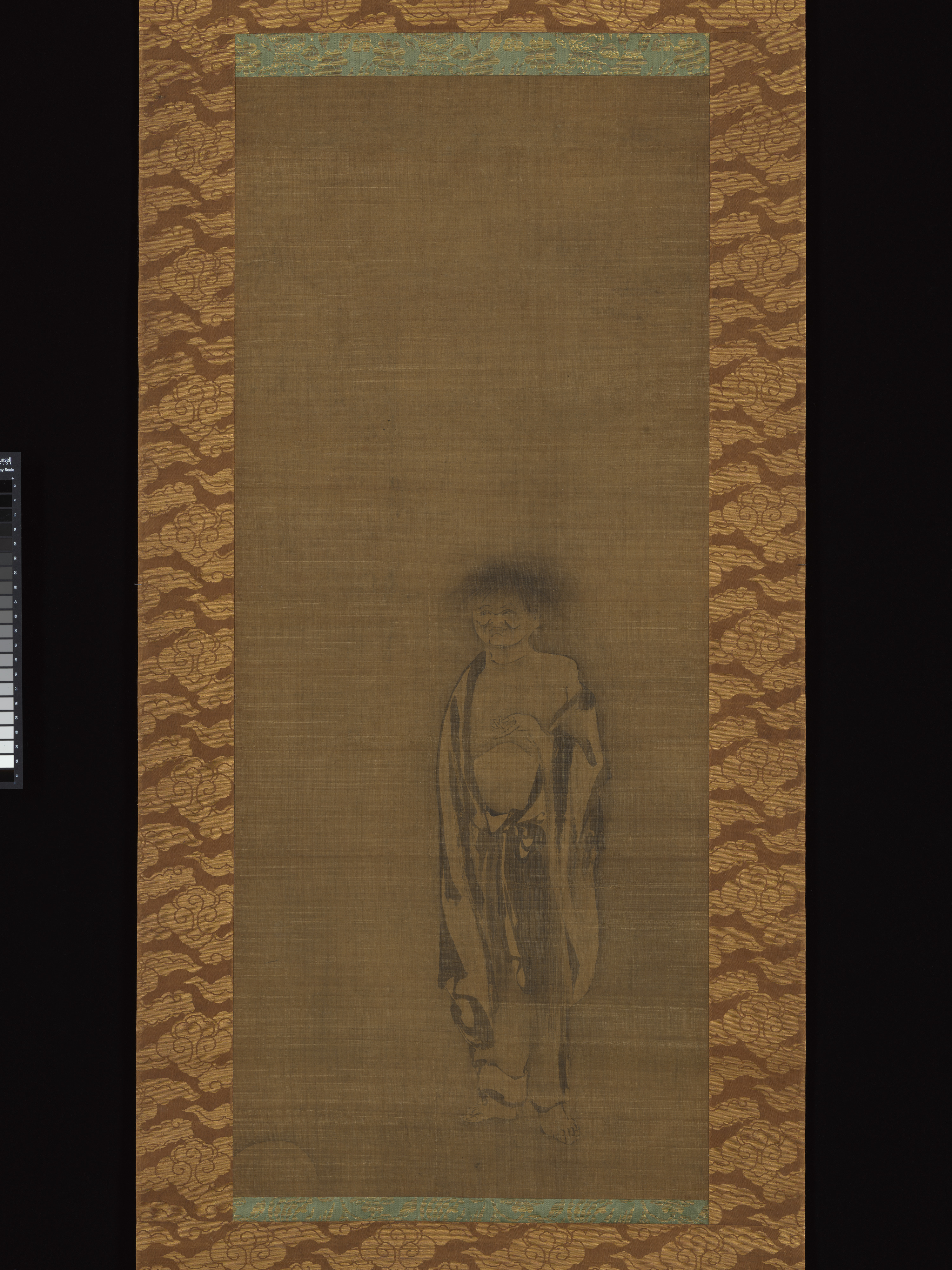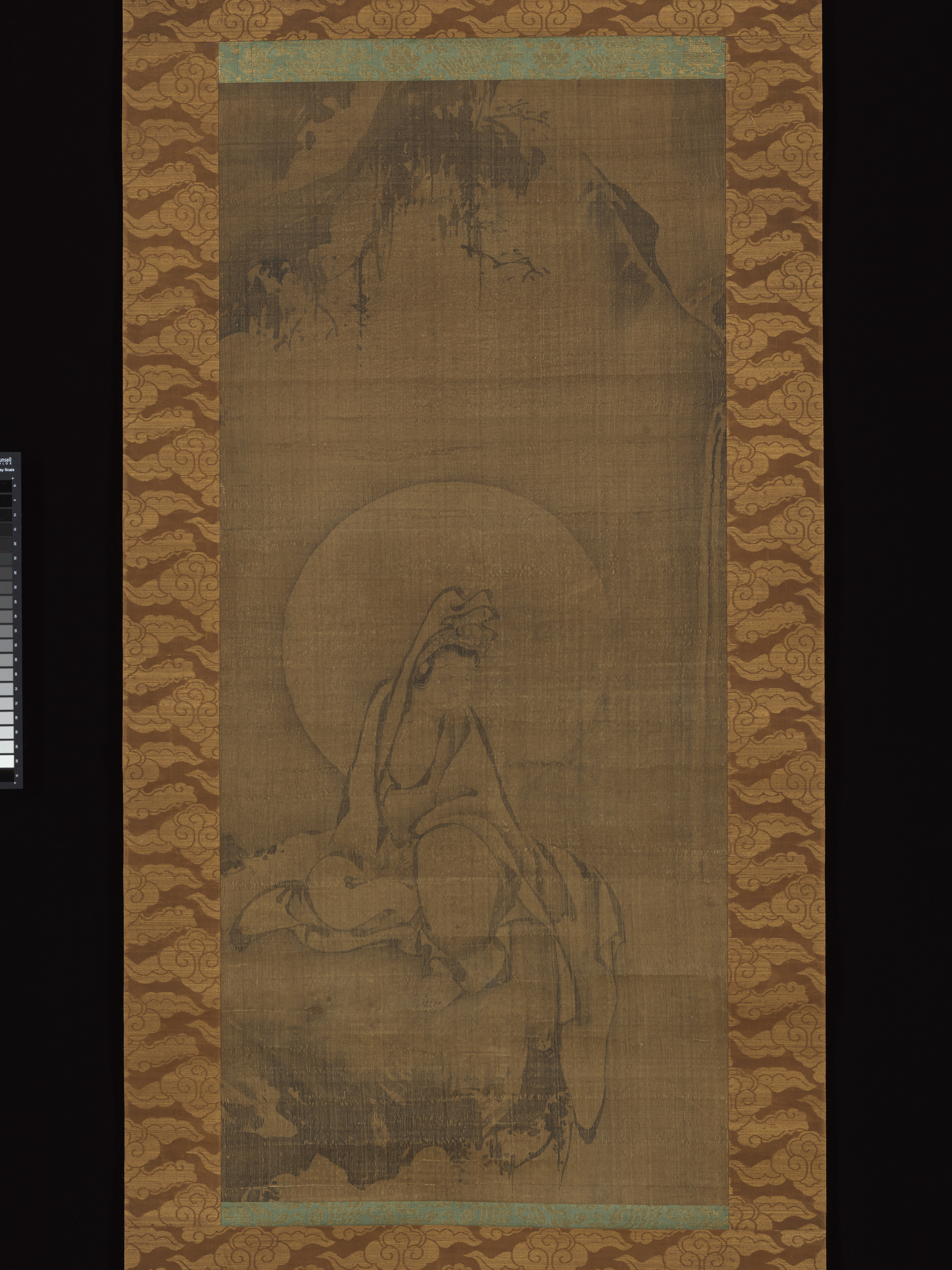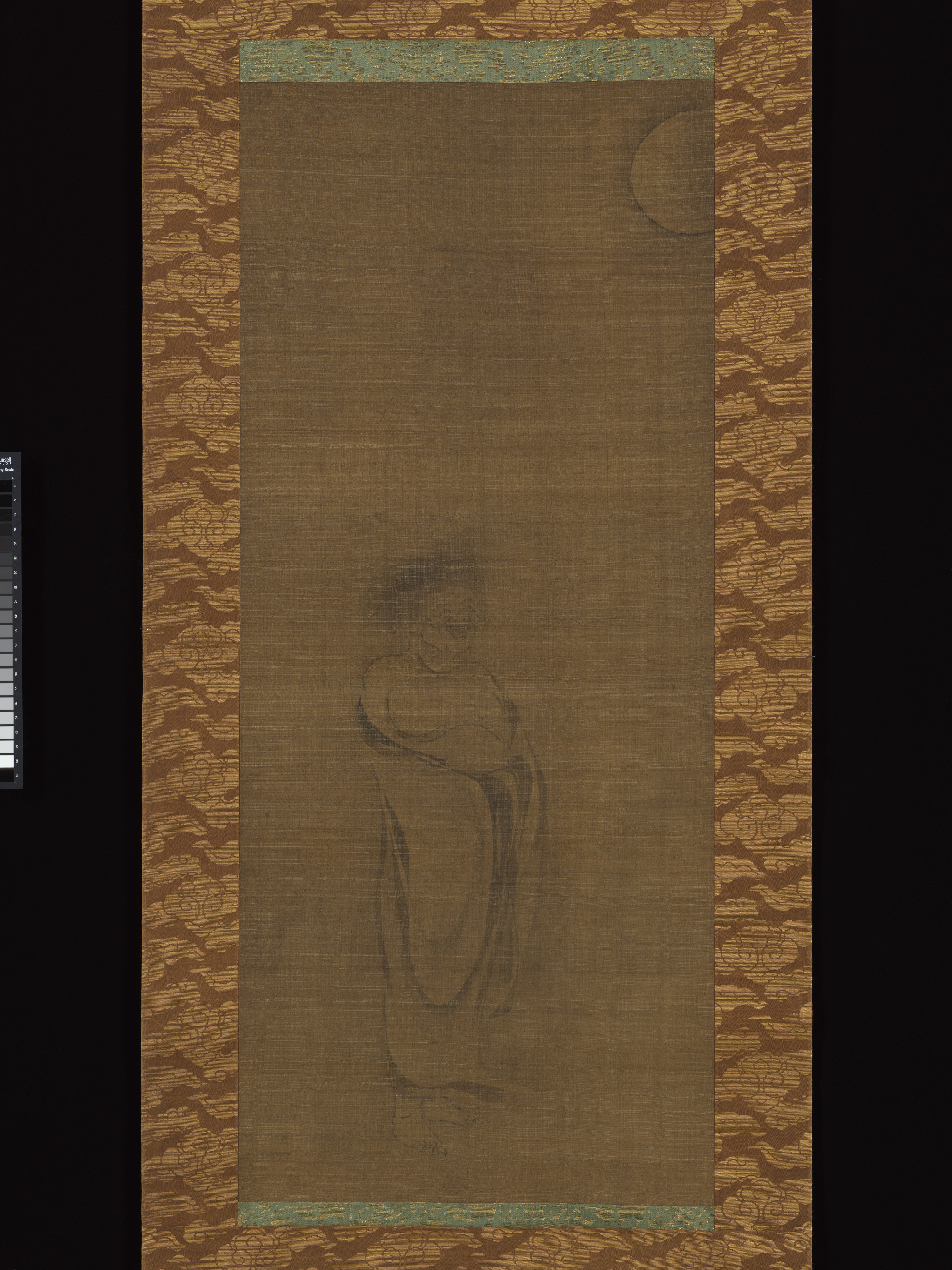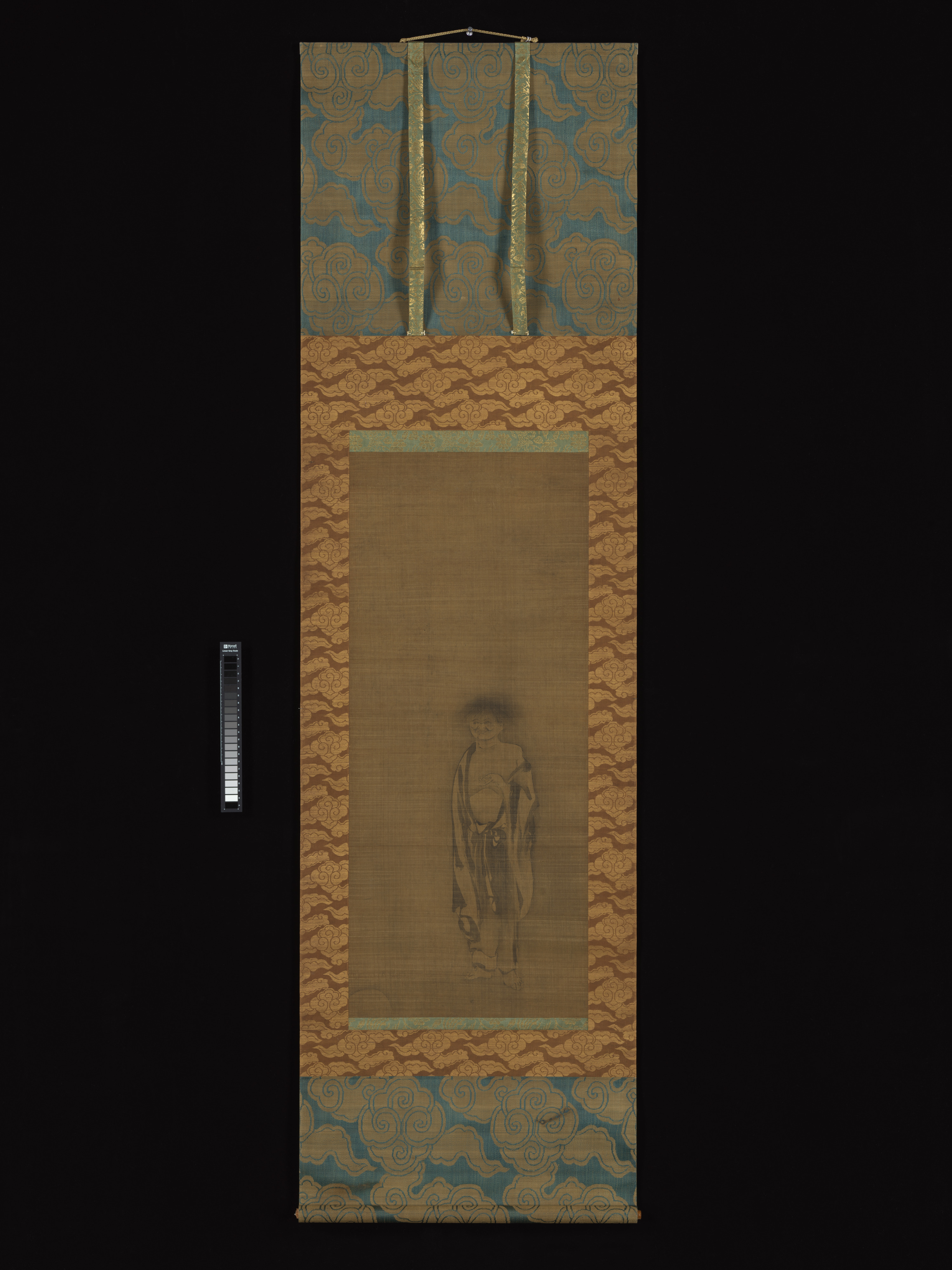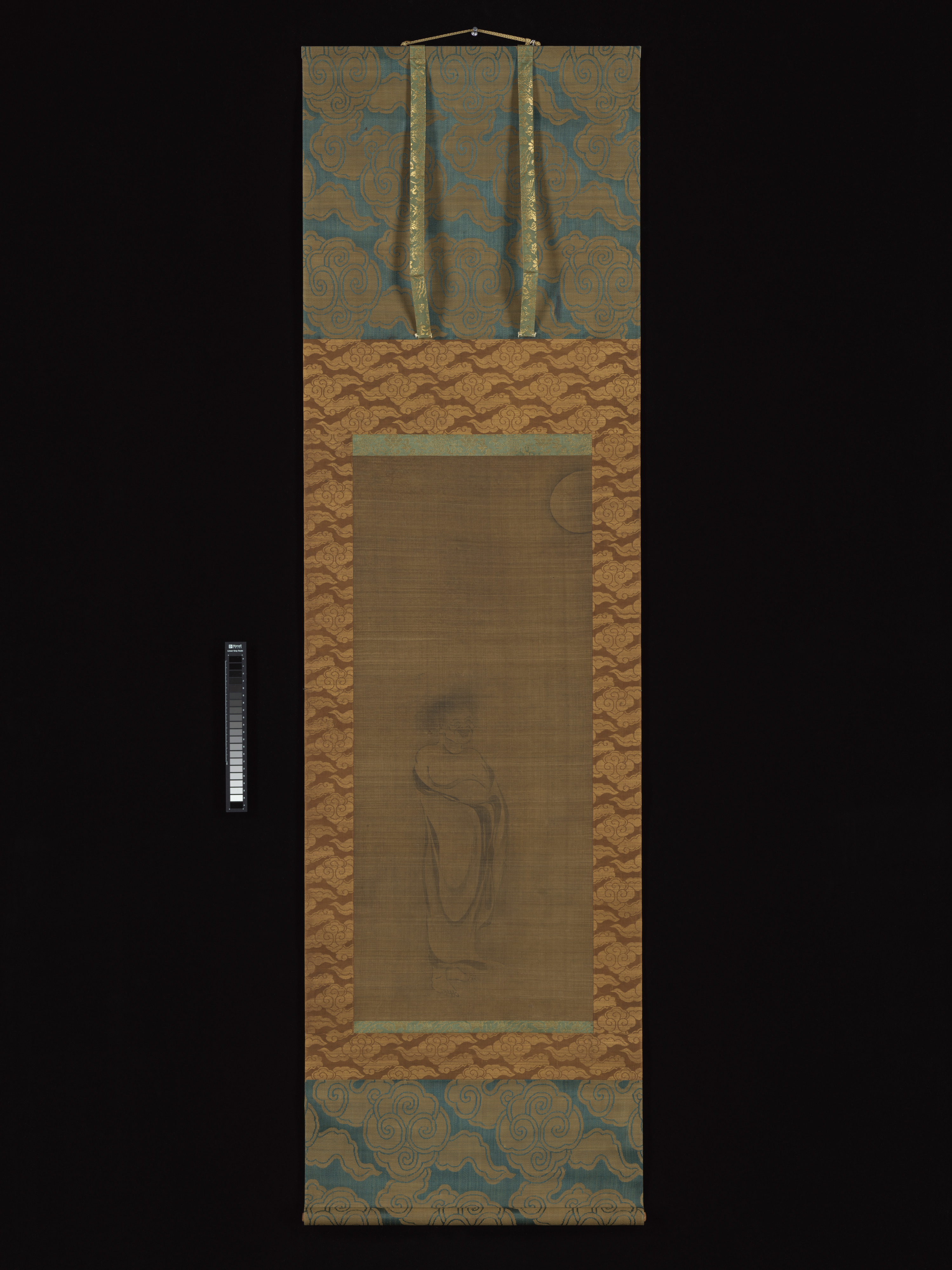White-Robed Kannon, Kanzan, and Jittoku
This triptych pairs the elegant White-Robed Guanyin (Kannon, in Japan) with Hanshan and Shide (Kanzan and Jittoku), ragtag but beloved figures from the Chan/Zen pantheon. Hanshan was an eccentric poet who lived in the mountains of Zhejiang Province; Shide was a kitchen worker at a nearby monastery who kept kitchen scraps for his poet friend. The juxtaposition of Guanyin’s otherworldly purity with Hanshan and Shide’s comic earthiness gives form to the Chan belief that enlightenment may come from unexpected sources. This triptych, from fourteenth-century Japan, reflects the ink-painting aesthetic shared among Chan and Zen monasteries during this period.
This image cannot be enlarged, viewed at full screen, or downloaded.
This artwork is meant to be viewed from right to left. Scroll left to view more.
